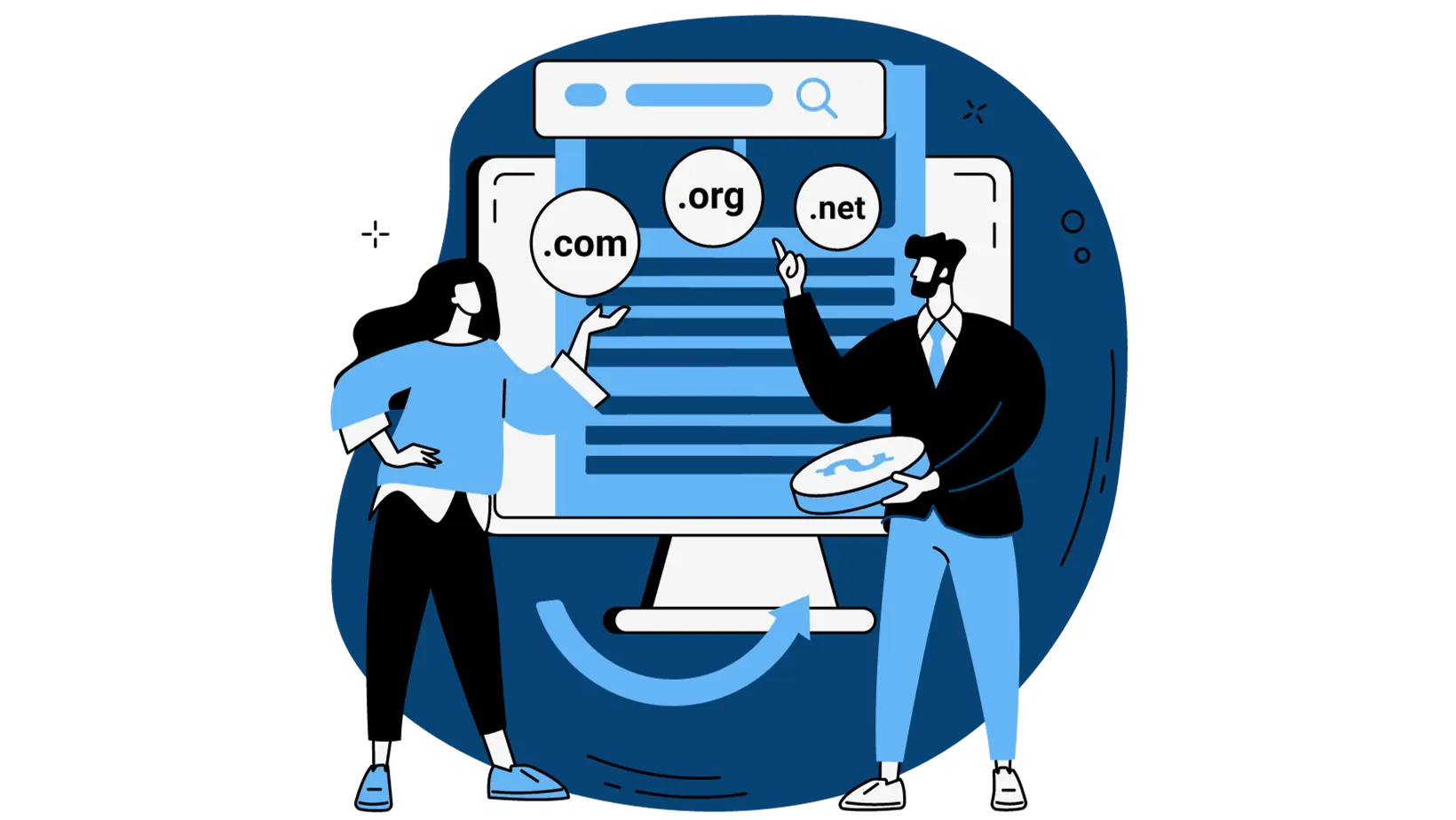- The purpose of a startup validation landing page
- Design your coming soon landing page around the sign up
- Get personal and tell your story on a waitlist page
- Design for action AFTER the sign up you can measure
- Engage your leads that signup on your validation landing pages
- Landing page optimization, analytics, and beyond
- Continue the journey through market research and audience building
We champion landing pages as critical tools—not a full-blown website. We don’t encourage you to get mired in creating blogs or procuring various social media profiles at this juncture. Your focus: a simple, elegant page to garner names and email addresses of potential customers.
We’ve already published a quick primer on writing effective landing page copy to read. The rest of this post will get more specific about elements that a waitlist, coming soon, or validation landing page should have.
The purpose of a startup validation landing page
Finding customers is a combination of art and science. It’s going to take longer than you think.
Your pitch is not as refined as the idea in your head is. You don’t really know if people want to buy that thing you’re slaving away at. Market validation is the name of the game, and collecting emails is the best way to prove there is real demand.
Timing is critical.
The sooner you publish a landing page for your product, the sooner you can:
- Refine your pitch. It takes time and tests to generate a message that strongly resonates and converts the most customers.
- Validate a product market fit. If you can’t convert people to leave their email address, you’re going to have a pretty hard time charging them money.
- Uncover distribution channels. Try directing traffic to your landing page from a number of sources and find out which source generates the most leads.
- FIND CUSTOMERS. I’ll repeat… This will take LONGER than you think. Start now or face the doom of launching to crickets… especially if this is your first new product.
Additional resources:
- Finding Your True Audience with a Contest
- Think Outside The Adwords and Drive Traffic To Your Landing Pages
- How to Collect 30,000 Leads by Faking It Before You Make It
Design your coming soon landing page around the sign up
Design, layout, copy, images, CTA’s, etc… ALL of these elements play into how well your landing page will convince people to give up their email address.
You are going to be measuring the conversion rate on these pages. Keep the primary goal of the page in mind at all times: Getting visitors to sign up! Don’t get in the way of that.
Brevity is the soul of your first landing page. Toss in an engaging mock-up or two if you have any, but don’t overpopulate the page with unnecessary features or overloads of information. A catchy name, a riveting tagline— those could be all you need to reel in your audience.
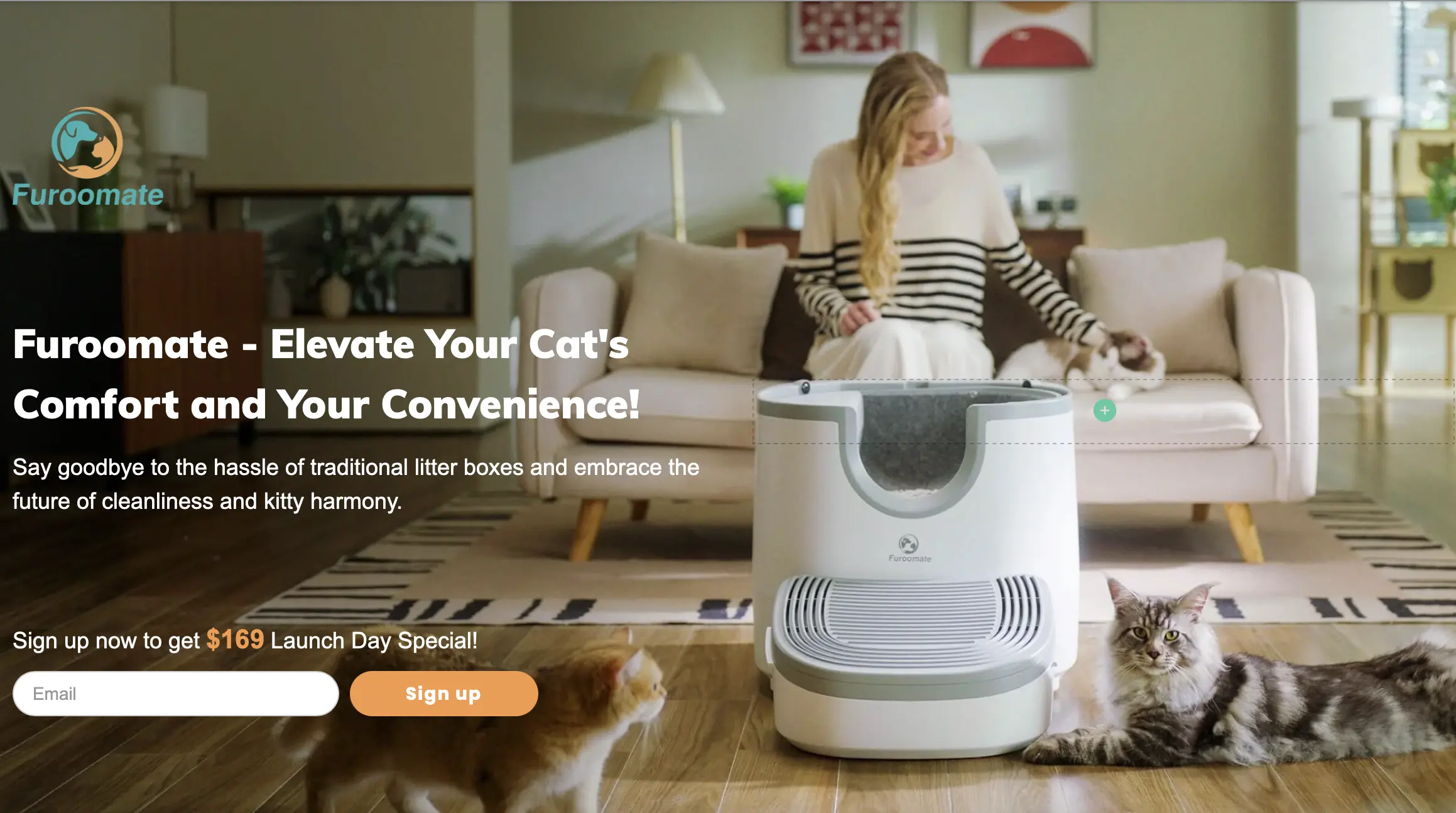
For a well-designed, high-converting landing page, do this:
- Make the first call to action clear. The sign up area should be distinctly visible from the rest of the page. It shouldn’t blend because a user is NOT going to hunt around for it.
- Only collect the information you ABSOLUTELY need. The longer a form users see the LESS likely they are to complete it. Limit form fields by asking only for essential information. Preferably, an email address should be all you ask for.
- Include an incentive. People like to know that they are getting something out of giving up their email address. You can even use early access as an incentive for signing up.
- Use outgoing links sparingly. Anything that takes them away from the page before they have completed the goal is an unnecessary distraction. You probably have a great blog, an awesome Facebook Page, and a lot more information somewhere… but if I start clicking around I’m not going to come back to fill out the form.
- Don’t put social links on the launch page… why would people share without even knowing what they’re getting? Include these, but only after they decide to sign up.
- No 3rd party branding. Make sure that the page is about your business. Don’t allow 3rd party links to steal visitors away from your page.
- Reward sign ups with more information. Once people have signed up, you can feed them more information. The thank you message and email is where you can push them to your blog, a longer video, or to a survey you want them to fill out.
Additional resources:
- Ten Examples That Teach You How to Write Remarkable Landing Page Copy
- Your Guide to Creating an Epic Call to Action
- What qualities are shared by the most successful product landing pages?
Get personal and tell your story on a waitlist page
Unless you’re already an internet celebrity with a large following, you are going to have to tell people something about what you want them to sign up for.
Being stealthy only looks cool, but it generates less signups and paying customers than telling your story. Launch pages that tease customers will set you up for failure. You may have higher conversion rates… but if every signup assumes for themselves what’s being built then you’ll have a LOT of dissatisfied voices when they feel like they were misled.
NDAs just stand in the way of good conversations.
Be open, honest, and transparent with customers about what you are building. It’s better for you AND them if some people opt out, and say that what you are doing isn’t for them. That will free up your time to focus on making the people you really care about happy.
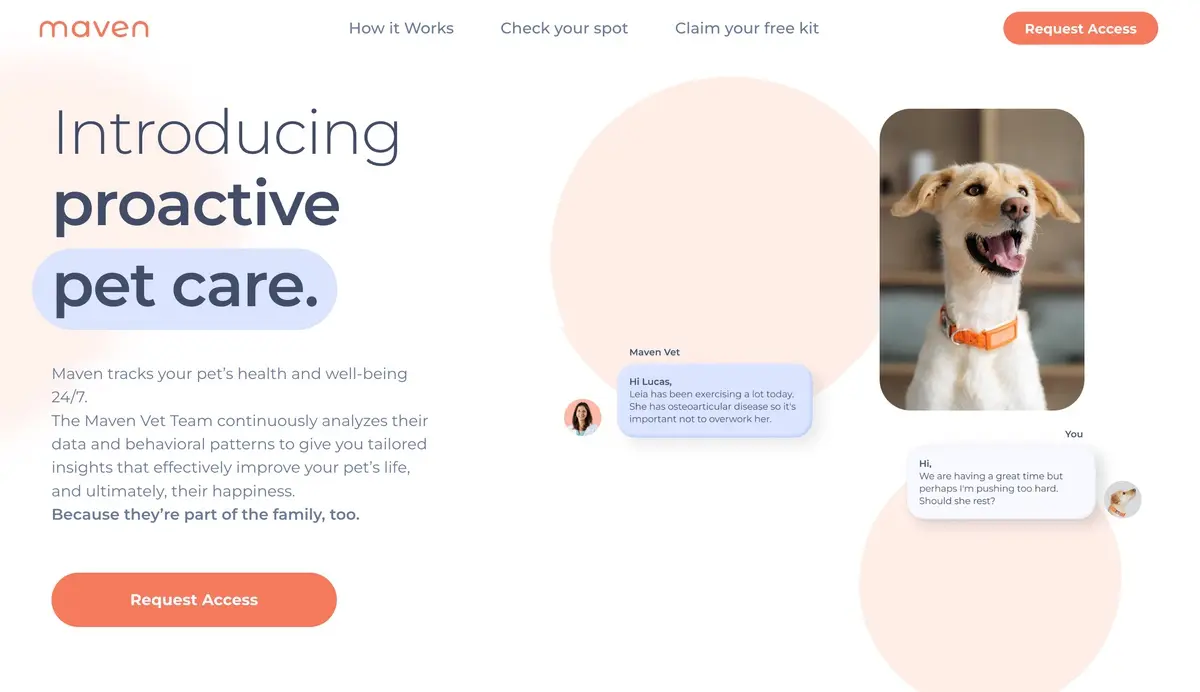
Some tips for telling a great story include:
- Make it short, sweet and tweet-able! Sorry, the internet is short attention span theater and you need to be able to fit in.
- Be honest. Let people know if this is real and being built or just something on the back of a napkin that you are testing.
- Problems are better than features. Don’t try and win a feature race before you’ve even launched. You don’t have anything built, so why would people think you’ll have everything you claim when you launch… Focus on how you are going to make their lives better.
- Add a short video and screenshot. As long as they help explain the problem being solved and tease your solution well. Shorter videos work better.
- Longer isn’t always better. Just because you can write five paragraphs addressing the problem statement doesn’t mean you should. You need only as much copy as it takes to tell a quick, yet compelling story.
- Build your buzz. Tap into your audience’s emotional triggers. Use a unique personality or humor to get the message out that your company and your offer is different.
One effective tactic that works wonders on early pages is a personal note or video introduction from the founder, you. A video pitch that portrays why you built the product, its importance to you, and the reasons others should get involved aids in creating credibility and provoking engagement.
Additional resources:
- How to Launch the Biggest 30-day Crowdfunding Campaign in History
- Essential Copywriting Tips for Absolute Beginners
- 7 Essential Ingredients For Making Your Contests Go Viral
Design for action AFTER the sign up you can measure
After someone has signed up, the goal of the page and customer interaction shifts to getting them to tell their friends about you, follow you online, and get more engaged with your brand. This is where virality can really kick in.
Take note that the best performing, virally successful launches tend to use a referral system to manage invite counts for each sign up. Where every sign up gets a unique url they can share with their friends.
Hey, guess what? KickoffLabs gives you just that. An awesome, viral referral system built-in. No coding required.
To guide and encourage people to share, do this:
- Make it easy. Have a Twitter and Facebook button front and center. These are easy wins.
- Follow up. Did you send the customer and email that explains how and why they should be sharing their unique link?
- Have a clear reward. Why should people tell their friends about you? Repeat what the incentive is, (you should have already stated it before they signed up).
- Let them know they have influence. People like knowing that other people take their advice. If someone shared your link and influenced others to sign up… tell them about it with a thank you!
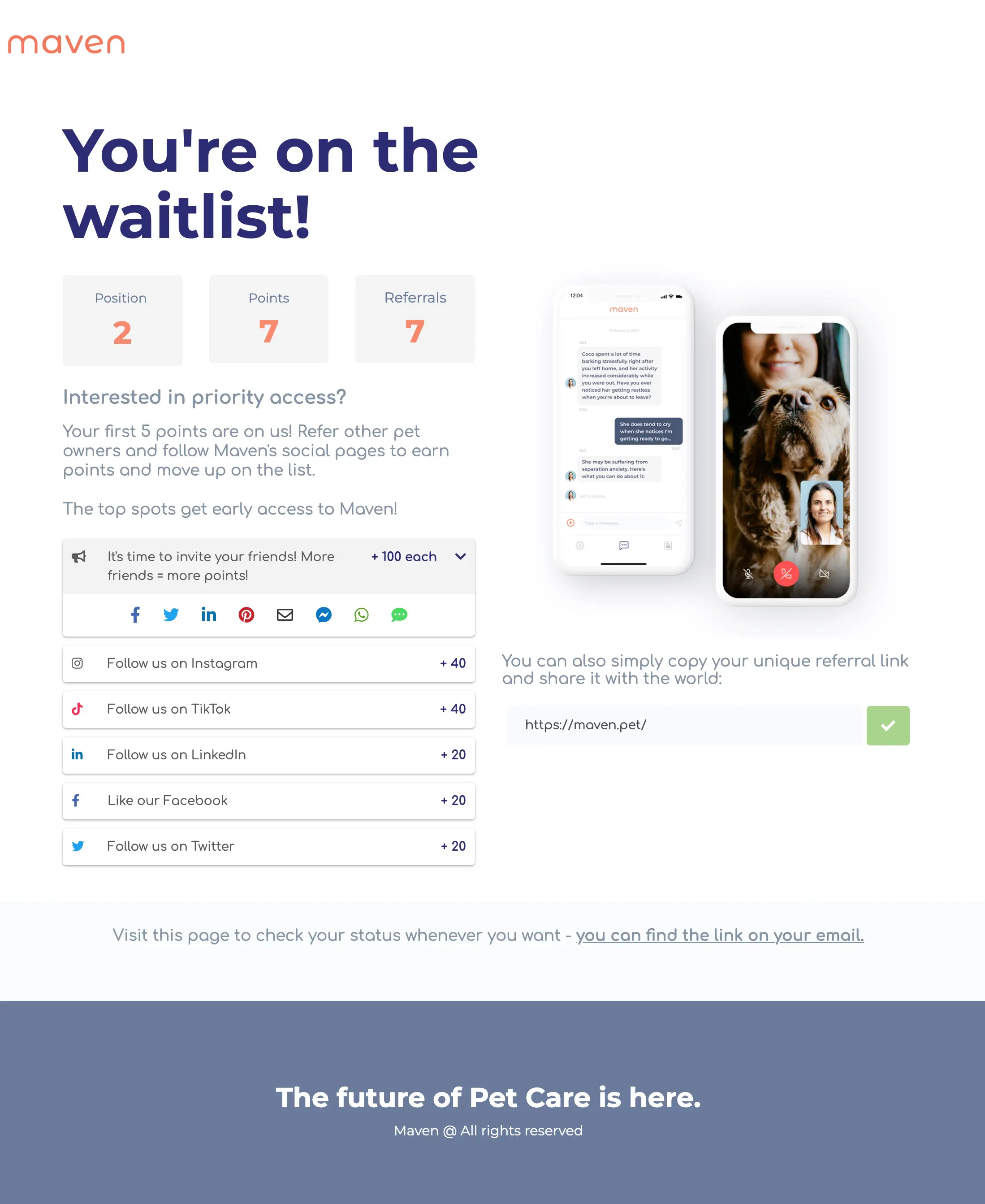
Additional resources:
- Using Social Referrals to Supercharge Your Landing Page Conversion Rate
- How to Setup a Social Referral & Rewards Campaign Like Harry’s Launch
- How to Setup a Viral Waiting List Launch Page Like Robinhood
Engage your leads that signup on your validation landing pages
Once people have signed up you want to keep them interested and engaged in what you’re up to.
The rule of seven (old-school marketing concept) states that people need to hear about your product seven times before they are willing to take action.
Take this time, pre-launch, to start building up those priceless customer relationships.
Build awareness about your new company by doing this:
- Say thank you. After a potential customer signs up, send them your praise and another chance to share with a great autoresponse.
- Learn more about your customers. Capturing an email address gives you someone that may be willing to fill out surveys, answer questions, and give you feedback that will ultimately make your final product more successful.
- Let them in the private beta. Give private beta access to your early sign ups or the ones that have influenced the most other customers.
- Encourage more sharing. Run a contest, offer unique rewards,
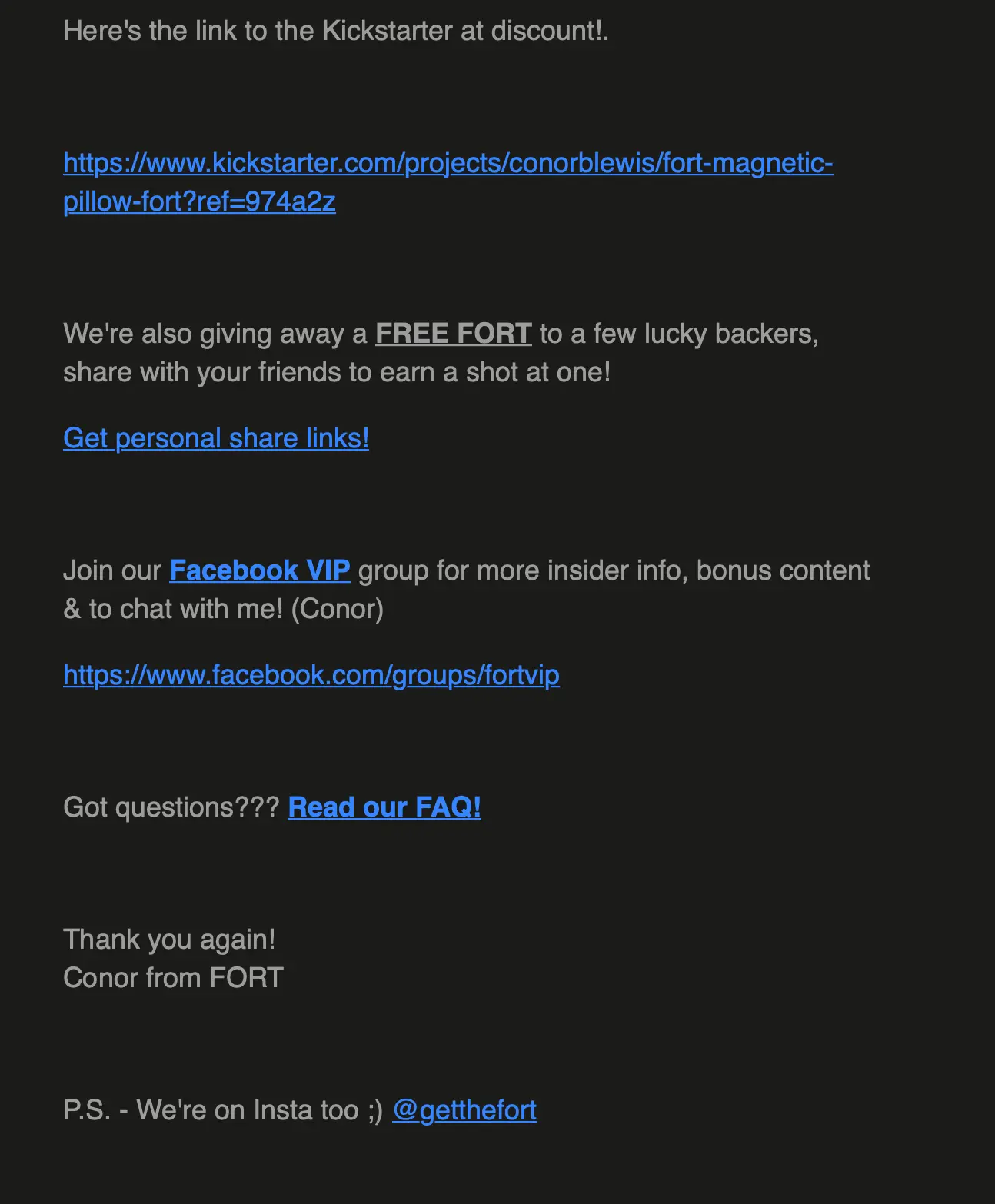
Landing page optimization, analytics, and beyond
Once your landing page draft is primed on Kickofflabs, it’s time to publish it on your domain. The emphasis here is not to splurge on a premium domain name—this is something you can refine later. The goal is to stake your claim with a domain that resonates with your idea and potential audience.
Next, ensure you’ve installed requisite tracking tools and analytics. Free tools like Google Analytics or the Facebook tracking pixel are crucial to measuring your landing page’s performance and guiding your future decisions. And remember, early validation is only the starting point of an exciting journey fraught with refinements.
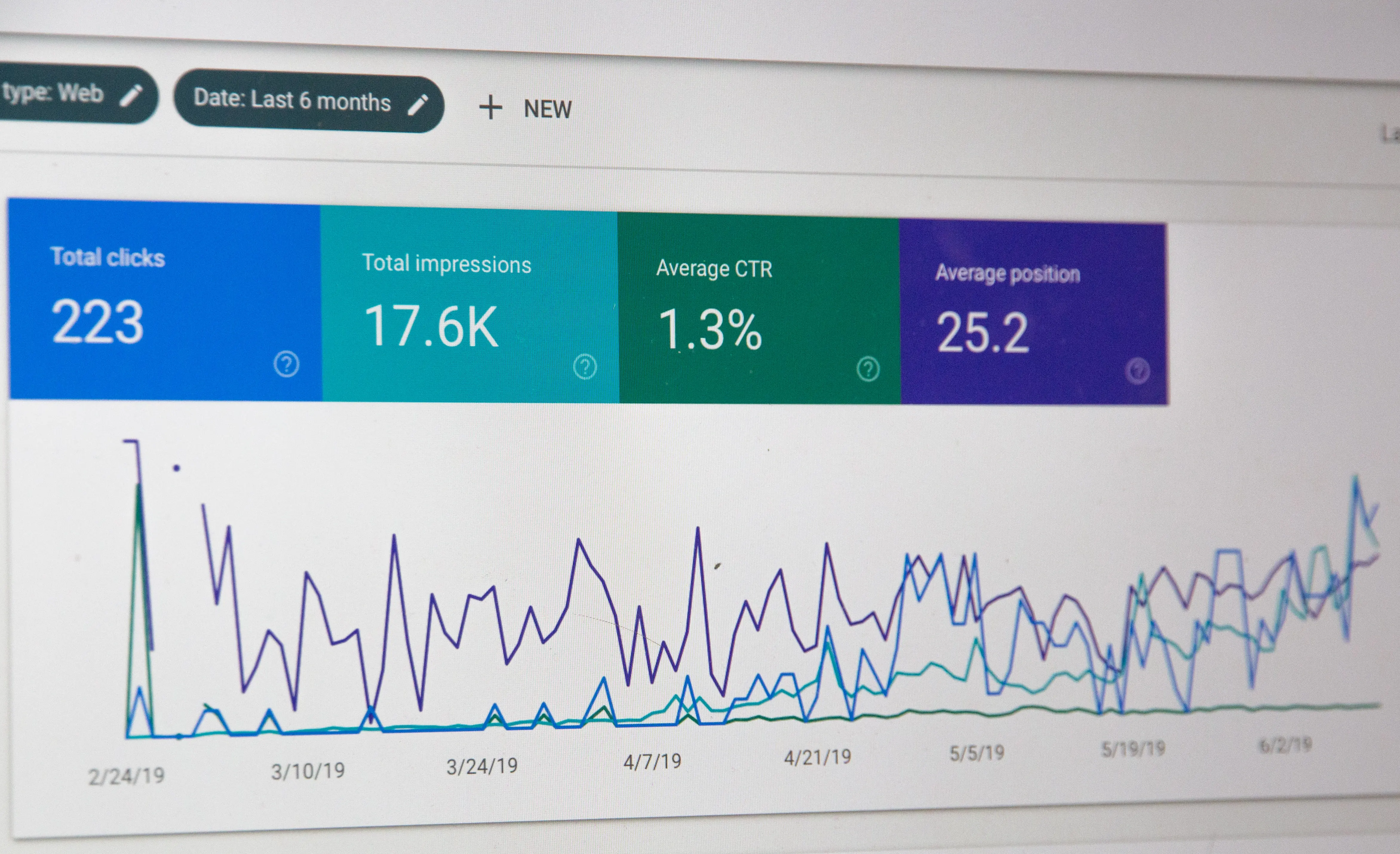
Continue the journey through market research and audience building
Our forthcoming entries will delve into nuanced strategies surrounding your early pages, the people you interact with, and fine-tuning your pitch to resonate with target customers. Stay tuned for more startup validation insights and tips from KickoffLabs!
In conclusion, your first landing page is not just a starting point– it’s a crucial element in the journey of validating your startup idea. It’s OK to be embarrassed by it. This is an essential springboard that initiates dialogues, builds an audience, and propels you towards success.
Read more Startup Validation with the next chapter:
4. Validation Metrics
Learn how to measure the success of your startup idea.
